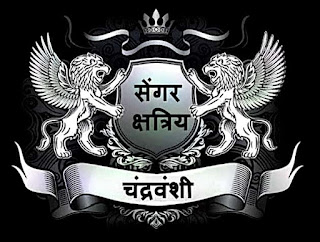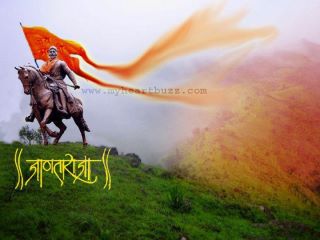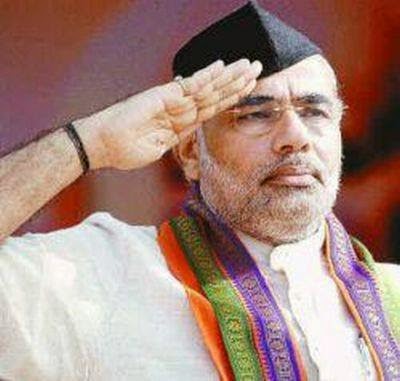fire was a pre-planned conspiracy : a large quantity of petrol was used in the incident
Forensic report was key to Godhra conviction
Published: Tuesday, Feb 22, 2011, 23:28 IST
http://www.dnaindia.com/india/report_forensic-report-was-key-to-godhra-conviction_1511619
By Nikunj Soni | Place: Ahmedabad | Agency: DNA
Public prosecutor JM Panchal said on Tuesday that evidence that led to the conviction of 31 persons in connection with the Godhra train burning case came from Gandhinagar’s Forensic Science Laboratory (FSL), eyewitnesses and circumstantial evidence.
The forensic evidence was crucial since two panels formed to investigate the cause of the fire on the Sabarmati Express on Feb 27, 2002, came to two different conclusions. While the Nanavati commission, set up by the Gujarat government in 2002 concluded that the fire was a pre-planned conspiracy and that the coach caught fire after petrol was poured inside deliberately, the UC Banerjee Commission, set up by the central government in 2004 said the fire was an ‘accident’ and ruled out the possibility of external attack.
Tuesday’s(22-2-2011)judgement depended on forensic evidence conducted by the FSL that concluded that the fire broke out in the S-6 coach after petrol was poured inside the compartment. The FSL report stating that a large quantity of petrol was used in the incident was placed on record before the court while the case was being heard.
According to sources connected to the case, the FSL examined the pattern of burning and even reconstructed the episode to determine how the coach caught fire. Given the pattern of the fire when the coach was set ablaze, the FSL ruled out the possibility of petrol being thrown from outside the coach either through the windows or doors. The FSL, however, noted the presence of petrol hydrocarbons at the site of the attack. Two containers found on the track also had some petrol in it.
According to the prosecution, the accused had brought these petrol-filled containers in a tempo to the Godhra railway station. They then entered the coach after forcing open the vestibule between two coaches and poured petrol into the coach that caused the fire.
However, the defence challenged the conclusion on many grounds. One argument was that the doctors who conducted the post-mortem on the victims of the fire did not note any smell of petrol or kerosene on the bodies. Thus, the defence argued that there was no evidence to prove that kerosene or petrol was used to start the fire that led to 59 deaths.
The forensic evidence was crucial since two panels formed to investigate the cause of the fire on the Sabarmati Express on Feb 27, 2002, came to two different conclusions. While the Nanavati commission, set up by the Gujarat government in 2002 concluded that the fire was a pre-planned conspiracy and that the coach caught fire after petrol was poured inside deliberately, the UC Banerjee Commission, set up by the central government in 2004 said the fire was an ‘accident’ and ruled out the possibility of external attack.
Tuesday’s(22-2-2011)judgement depended on forensic evidence conducted by the FSL that concluded that the fire broke out in the S-6 coach after petrol was poured inside the compartment. The FSL report stating that a large quantity of petrol was used in the incident was placed on record before the court while the case was being heard.
According to sources connected to the case, the FSL examined the pattern of burning and even reconstructed the episode to determine how the coach caught fire. Given the pattern of the fire when the coach was set ablaze, the FSL ruled out the possibility of petrol being thrown from outside the coach either through the windows or doors. The FSL, however, noted the presence of petrol hydrocarbons at the site of the attack. Two containers found on the track also had some petrol in it.
According to the prosecution, the accused had brought these petrol-filled containers in a tempo to the Godhra railway station. They then entered the coach after forcing open the vestibule between two coaches and poured petrol into the coach that caused the fire.
However, the defence challenged the conclusion on many grounds. One argument was that the doctors who conducted the post-mortem on the victims of the fire did not note any smell of petrol or kerosene on the bodies. Thus, the defence argued that there was no evidence to prove that kerosene or petrol was used to start the fire that led to 59 deaths.
----
साबरमती की विशेष अदालत ने 9 साल पहले हुए गोधराकांड में महत्वपूर्ण फैसला सुनाते हुए 94 में से 63 आरोपियों को बरी कर दिया जबकि अग्नीकांड को साजिश करार देते हुए 31 लोगों को दोषी करार दिया। गोधराकांड की जांच के लिए बनाए गए दो आयोगों ने भी इस मामले में अलग-अलग राय दी थी। निम्न बिंदू बने फैसले की मुख्य वजह..-कोर्ट ने अभियोजन की इस मुख्य दलील को मान लिया कि अयोध्या में विवादित स्थल से यज्ञ आहुति करके साबरमती एक्सप्रेस से लौट रहे कारसेवकों से बदला लेने के लिए साजिश रची गई।
- चश्मदीद अजय बारिया, रंजीत सिंह पटेल, प्रभात सिंह पटेल, सिकंदर फकीर की गवाही को मंजूर किया गया है। इनमें से दो पेट्रोल पंप कर्मचारी थे, उन्होंने बयान में बताया कि एस-6 कोच में बड़ी मात्रा में पेट्रोल छिड़का गया।
-यह स्पष्ट नहीं हुआ है कि जिन 63 आरोपियों को बरी किया गया है उन्हें संदेह का लाभ दिया गया है या साक्ष्यों के अभाव में उन्हें छोड़ा गया है।
-कारसेवकों और अन्य यात्रियों सहित 50 चश्मदीद के बयानों पर कोर्ट ने विचार किया।
- चश्मदीद अजय बारिया, रंजीत सिंह पटेल, प्रभात सिंह पटेल, सिकंदर फकीर की गवाही को मंजूर किया गया है। इनमें से दो पेट्रोल पंप कर्मचारी थे, उन्होंने बयान में बताया कि एस-6 कोच में बड़ी मात्रा में पेट्रोल छिड़का गया।
-यह स्पष्ट नहीं हुआ है कि जिन 63 आरोपियों को बरी किया गया है उन्हें संदेह का लाभ दिया गया है या साक्ष्यों के अभाव में उन्हें छोड़ा गया है।
-कारसेवकों और अन्य यात्रियों सहित 50 चश्मदीद के बयानों पर कोर्ट ने विचार किया।









टिप्पणियाँ
एक टिप्पणी भेजें